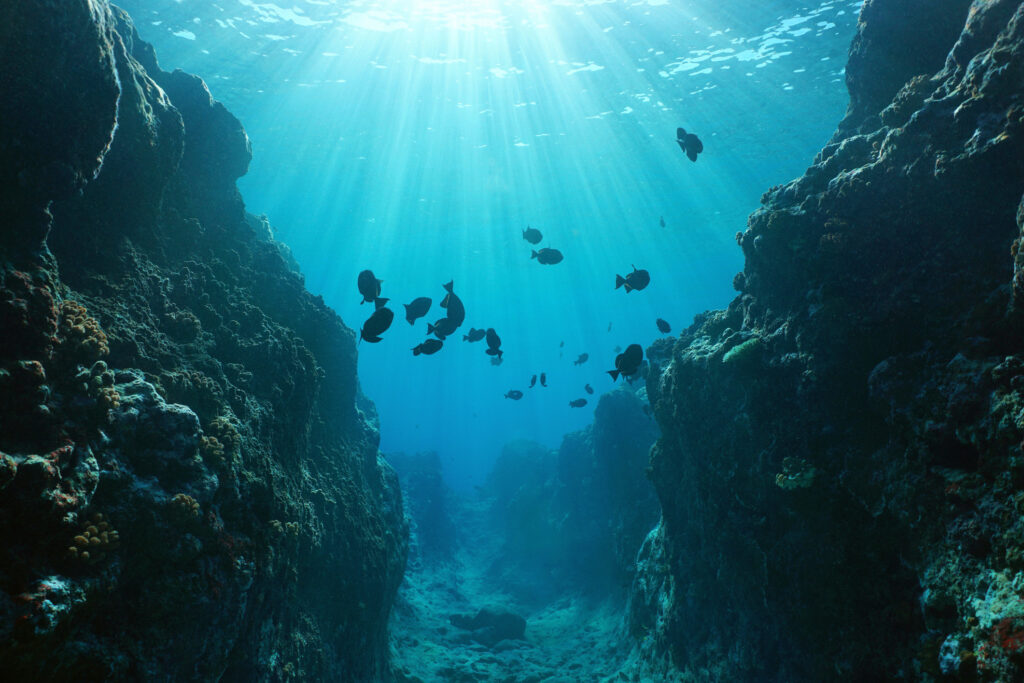The ocean is incredibly vast, home to a multitude of life forms from huge mammals to the smallest plankton. What’s more, it’s a vital ecosystem for the health of our planet, providing around 50% of our oxygen and absorbing around 98% of heat from the sun’s rays.
The ocean also serves to protect us from climate change by holding 60 times more carbon than the atmosphere due to its vast scale!
So, with so much to explore about our oceans, how much do you really know? In our latest venture to help you understand more about the world you live in, it’s time to put your knowledge to the test!
What do you know about our oceans?
Whether you think you’re an ocean expert, or you’re just starting out on your learning journey to appreciate more of the world’s waters, we can bet our quiz will help you to discover a new fact or two. So, no matter your score at the end of it, give it a go and see what you learn.
Learn something new about the world’s oceans
If you’ve already done the quiz above, we’re going to dive into even more detail about some of the things you might have learned. If you haven’t done the quiz yet, scroll back up so you don’t accidentally cheat!
The size of the ocean
The ocean is essentially one huge body of water, broken up in to five ocean basins. With that in mind, it’s safe to say it’s pretty big! It covers around 71% of the Earth’s surface, to be precise, and holds around 1.3 billion km3 of water.
What’s more, the ocean holds 97% of all water on Earth, and takes up 99% of the planet’s biosphere. This means the world we know on land, represents only 1% of the world’s biosphere. In simple terms, the biosphere is the part of Earth where all life exists, including land, water, and air. It’s like a giant, interconnected system where plants, animals, and humans live and interact, allowing our planet to thrive.
The deepest part of the ocean is known as the Mariana Trench, located in the Pacific Ocean. It’s the deepest oceanic trench, measuring around 10,916m deep. Only a few people in history have ever made it there. It took Jacques Piccard and Navy Lt. Don Walsh 5 hours to get down there in a U.S Navy submersible, and could only spend 20 minutes down there before returning.
The biggest ocean
The five ocean basins are the Pacific, Atlantic, Indian, Arctic and Southern Oceans. The largest basin by far is the Pacific Ocean, reaching the Western coasts of America across to Asia and even as north as Russia.
The Pacific Ocean is twice the space and volume of the next biggest ocean basin, the Atlantic. It’s no surprise that it’s the Pacific Ocean that’s home to the biggest number of islands too – around 25,000 to be more exact. This includes what we know as Polynesia, as well as Micronesia and Melanesia.

Exploring the ocean
We’ve always been fascinated by the ocean, with its vast size and deep waters, but the truth is that most of the ocean is completely unexplored. While explorers have been attempting to uncover more of the open waters for centuries, oceanography is one of the newer fields of science. Only 5% of our oceans have been discovered, which is an incredibly small amount when you think of the sheer size of it.
With that in mind, the technology to enable ocean exploration is quite new, and most of the conditions under the water make it very difficult. It’s actually easier to send someone to space, than it is to the bottom of the ocean!
The salty sea
Ocean and sea water is salty, with some areas containing more salt than others. The Dead Sea is often known as the saltiest sea, due to evaporation. The high salt content also increases the water’s density, which is why you can float in it more easily. At 35 ppt, salt water has a specific gravity of 1.026. A marine aquarium should have an appropriate range of 1.020 to 1.026. A brackish aquarium should have a range between 1.005 and 1.015.
The salinity of the ocean is mostly caused by the rain, washing mineral salts and their ions from the land.
Mountains in the ocean
On land, we have a number of great mountain ranges from the Himalayas to the Andes. However, the biggest mountain range in the world actually lives underwater! The Mid-Ocean Range is around 40,000 miles in length, running down the centre of the Atlantic Ocean. What’s more, it’s getting bigger too, thanks to seafloor spreading. This is a geologic process where the tectonic plates split apart. The Mid-Ocean, or Mid Atlantic, Ridge is spreading slowly around 2-5cm every year.
So, when it comes to the ocean, there really is an incredible amount to learn and understand. Here at Blue Planet Aquarium we’re home to a number of exhibits that can continue to teach you something new about our world’s waters and the creatures that call them home. Book your tickets today and visit our incredible aquarium!
